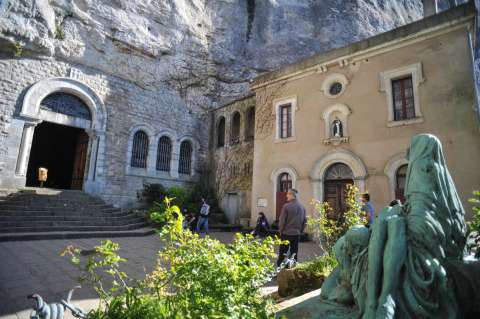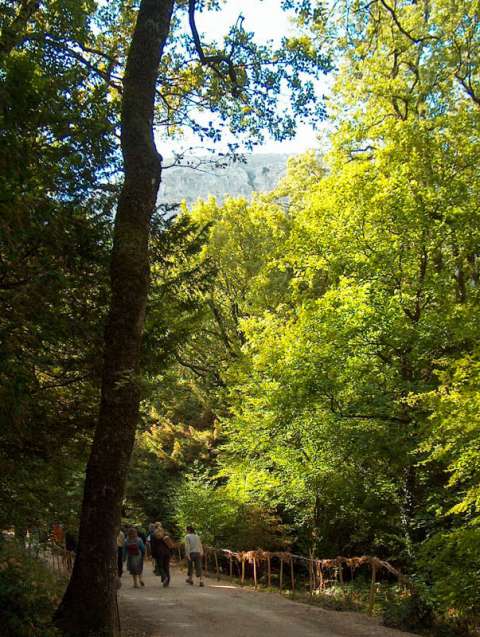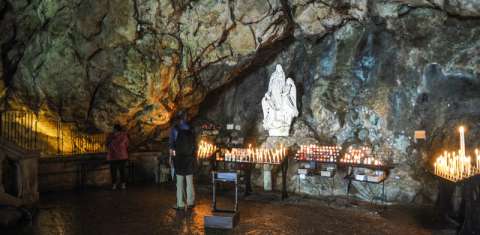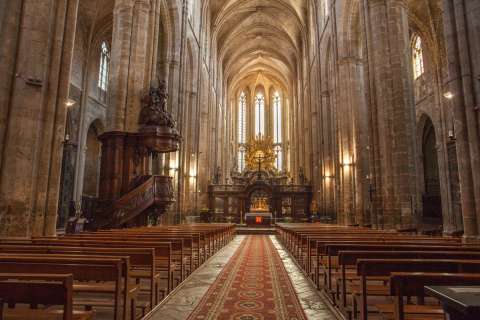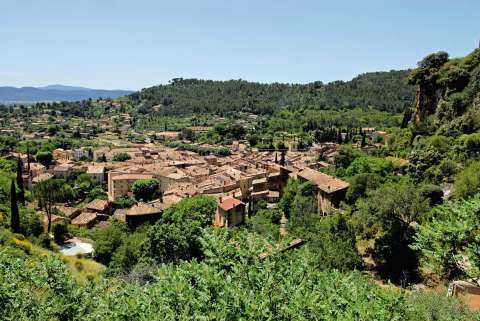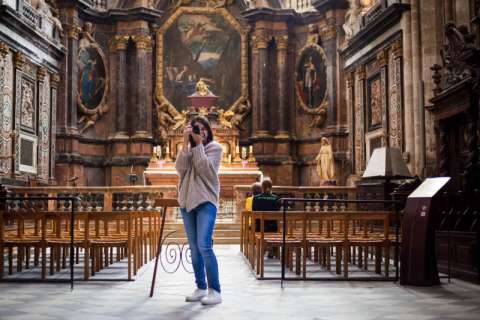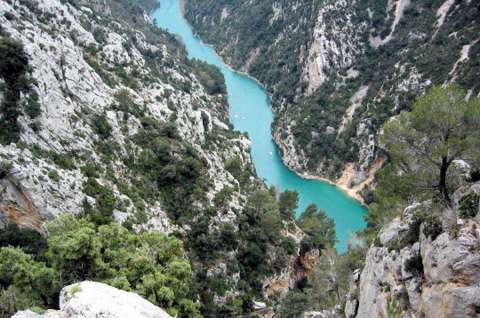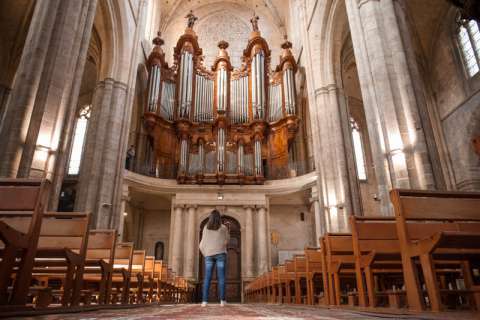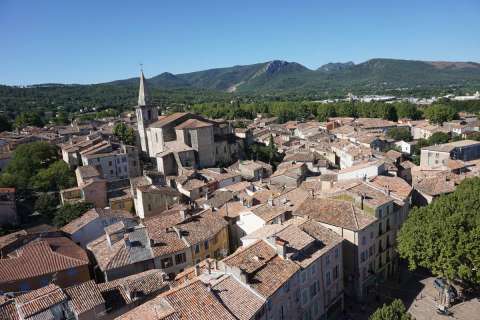One Sanctuary, two holy places to discover
Situated in Provence, this sanctuary houses two highly holy places: the grotto where Mary Magdalene spent the last 30 years of her life and the basilica where her remains were unearthed. First witness to the Resurrection of Christ, Mary Magdalene came to France to preach the Christian faith. She decided to stay in La Sainte-Baume to repent inside a cave, helping those who came to her. Her remains were exhumed in 1279 where the Saint-Maximin basilica now stands.
History
Almost 2,000 years ago, after witnessing the Resurrection of Christ, Mary Magdalene landed near here, in Les Saintes-Maries-de-la-Mer, on the shores of the Mediterranean Sea. Along with her brother Lazarus, who converted the whole of Provence, she initiated the spread of Christian faith in Europe. Choosing a hermit life, she spent her last 30 years in penitence inside a grotto in La Sainte-Baume mountain ridge.
Her remains were unearthed in the 13th century a few km away, in Saint-Maximin, at the exact place where the basilica now stands. They are kept in a reliquary inside the crypt, where thousands of pilgrims from all over the world come and pray.
Both places, the grotto and the basilica where the relics of Saint Mary Magdalene lie, are part of the Sanctuary. A hiking trail, walked by kings such as Saint Louis and Louis 14th, link the two holy places.
Cultural Heritage
La Sainte-Baume is a limestone mountain ridge boasting many caves and fossils. Archeological digs found traces of prehistoric human life, including tools made out of flint stones. The most famous grotto is the cave Mary Magdalene chose to spend her final years, in contemplation and prayer when she escaped persecution in Palestine. Pilgrims can get there by car or on foot. It takes several hours to climb the track, ending with 150 steps to reach the cave.
The history of Saint-Maximin dates back to the Neolithic period with the first human settlements. After centuries of Roman occupation, a first monastery was erected in the 5th century. In 1279, King Charles II ordered the excavation of the site, unearthing the remains of Saint Mary Magdalene amongst several tombs. The construction of the basilica quickly followed and set in motion the beginning of a great pilgrimage that lasted centuries. Its impressive size makes it the largest Gothic structure in Provence. Down below inside the crypt, pilgrims come and kneel in front of the skull of Mary Magdalene. Despite the plunder of the French Revolution, the relics were spared and the organ saved by the playing of La Marseillaise during the pillaging.
Today, Saint-Maximin is a typical Provence town surrounded by olive groves, a few km from the sea. The smell of lavender and the songs of cicadas fill its narrow streets. Fountains and colourful squares are an invitation to slow down, enjoy and soak up the atmosphere.
Message and Pilgrimage
The holy grotto and the basilica combined pay host to around 400,000 visitors every year. Like Mary Magdalene showing penitence for her sins, many pilgrims visit the sanctuary to ask for forgiveness, unloading their burdens or finding renewed faith. Over four hours on foot separate the two holy places, a chance to reflect following the Stations of the Cross on a path overlooking the sun-kissed Provence landscapes.
Sightseeing
Cotignac
A charming village in Provence with brightly coloured houses, small streets filled with artists’ galleries and a large square to watch life go by, under large plane trees. Above the village, the large rock accessible via a stairway boasts ancient cave dwellings.
Brignoles, medieval city
Another southern gem in which to enjoy the warmth of the climate while having a drink on a shady terrace or a walk on the medieval city walls.
Le Château d’Entrecasteaux
11th century fortress with gardens inspired by Le Nôtre.
Les Gueules Rouges Museum in Tourves
Museum and Arts Centre retracing the history of mining the mineral Bauxite, otherwise known as the Provence gold. Bauxite was transformed into aluminium and was, alongside wine making, a thriving industry in the area.
The Verdon Gorge
Absolutely spectacular. This is the largest canyon in Europe, 175 miles long with cliffs reaching 700m in height. Canoeing available with stop-offs for picnics and a swim in this stunning natural environment.
La Sainte-Baume
A Natural Regional Park 20 km from the sea, this large mountain area is the starting point of many streams over and underground as well as caves. A beautiful natural environment conducive to hiking or strolling, for all levels of fitness. It is home to the great pilgrimage site to the grotto of Mary Magdalene.
Sainte-Victoire Mount
Painted by Cézanne in 80 of his masterpieces, the mountain is stunningly beautiful with many hiking trails reaching its peak at 900m above sea level.
Saint-Maximin Basilica
73m long, 37m wide and 29m in height, this is the largest Gothic building in Provence, where the body of Mary Magdalene was unearthed in 1279.
Events
August
Medieval festival in Brignoles
A step back in time with fearless knights in full armour, ladies in long dresses, a blacksmith banging his anvil, taverns serving ale….and creatures with masks straight out of local legends.
September
Sausage fair in Le Val
Sick of paying taxes and suffering from repetitive famines, the inhabitants of Le Val asked Louis 13th for his support. In response, the village became the official sausage supplier in the area. A tradition still perpetrated today with a yearly sausage festival.
